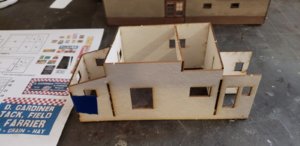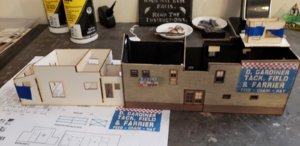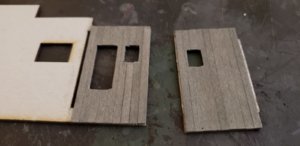While many modelers have used Atlas "Snap" switches (turnouts) I would strongly recommend not using them in a permanet layout.
Greg: Again, it depends on the application. once the trackage leaves the main line, pretty much use what will fit. Atlas makes two sizes of Snap Switches, one designed to fit into an 18" radius curve, another designed to fit in with a 22" radius curve. The newer versions have insulated frogs similar to the custom line switch and are equally durable. In a prototype modeling application, they work well as leads off the main for 90° curves, such as found in industrial parks. Atlas #4s will also work in these applications but use more space. I would never consider using them for main line crossovers or in passenger or intermodal terminals. You would be surprised what tracks around tight frogs and curves on prototype rails, but wouldn't stand a chance of working on a model railroad. When it comes to track, prototype doesn't scale down as well as other elements.
For the record, My main line switches are all #6 Micro Engineering, mostly with code 70 rail. Same for my yard and connecting tracks. For staging, I use either a #6 or a #5, while sidings off of industrial leads range from #6 to #4. Everything I have, including passenger cars and 75' Intermodal flats work well on #6 switches. My son has actually incorporated "Snap Switches" into his layout in places where they are a better fit, than a #4 or #5, and for those applications they work well.
Each application is unique, and the modeler has to decide what he wants and how it will work. There are guidelines, but as I said before, your experiences may vary.
Boris




